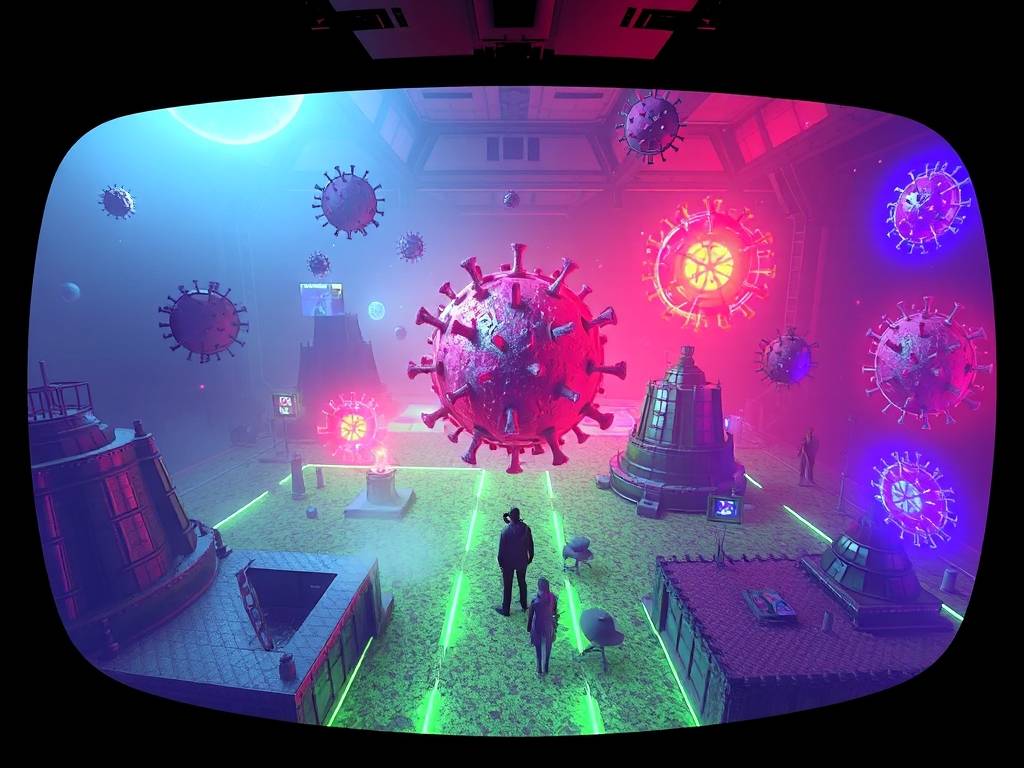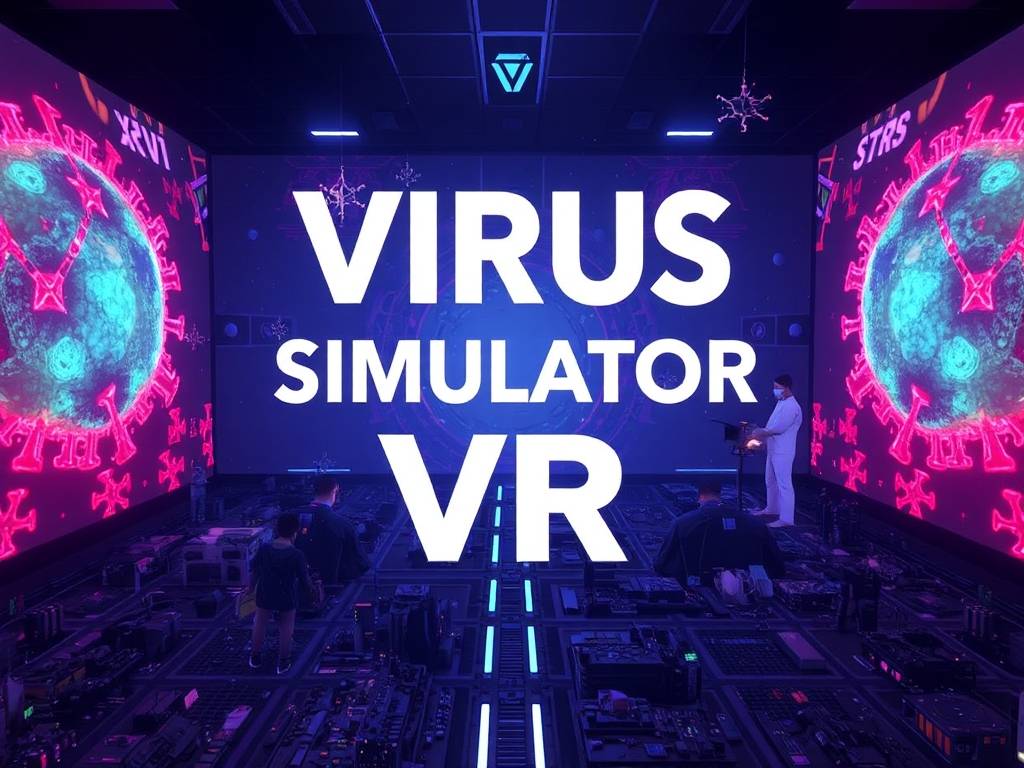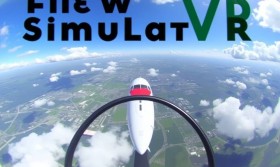Title: The Digital Plague: How "Virus Simulator VR" is Redefining Public Health Education Through Its Spread Missions Expansion
The virtual reality landscape is often a realm of fantasy, a playground for slaying dragons or piloting starships. But a new, groundbreaking genre is emerging, one that turns the immersive power of VR inward to explore the most intimate and global of battles: the war against disease. At the forefront of this movement is "Virus Simulator VR," a title that has evolved from a niche scientific tool into a compelling, and unnervingly educational, experience. Its latest "Spread Missions Expansion" is not merely an add-on; it is a profound transformation of the game's core premise, shifting the player's role from passive observer to active, strategic agent in the complex theater of epidemiological warfare.
From Pathogen to Pandemic: The Core Gameplay Loop
Before delving into the expansion, one must understand the base game's chilling brilliance. In the original "Virus Simulator VR," players don the lab coat of a digital virologist. Using motion controllers to manipulate DNA strands, adjust virulence factors, and analyze cellular structures, the goal was to engineer the ultimate pathogen. The success metric was a grim tally on a world map: infection rates, mortality percentages, and the collapse of healthcare systems. It was a god-game from the perspective of a microscopic menace, fascinating but ultimately a solitary, laboratory-bound experience.

The Spread Missions Expansion shatters the confines of the lab. It introduces a first-person, ground-zero perspective that is as immersive as it is terrifying. The player is no longer the virus itself but a "Field Agent" for a global health organization—or, in a clever twist of gameplay modes, an "Unwitting Carrier" for a rival biotech corporation with more nefarious goals.
The Field Agent: Containing the Invisible Fire
In the primary campaign mode, players are deployed to outbreak hotspots. Imagine standing in a meticulously recreated, bustling Asian wet market, the air thick with humidity and the cacophony of commerce. Your VR headset displays a HUD overlay showing real-time pathogen data. Your mission is not to spread the disease, but to contain it.
This is where the expansion truly shines as an educational tool. Gameplay becomes a series of critical, time-sensitive decisions:
- Triage and Diagnosis: Using a virtual tablet, you must interview digital citizens, assessing symptoms against a database of diseases. A misdiagnosis can lead to precious resources being wasted on the wrong patient.
- Contact Tracing: This abstract concept becomes a tangible, spatial puzzle. You must retrace an infected individual's steps through a virtual city, using environmental clues and data logs to identify everyone they may have encountered. The pressure mounts as the clock ticks and the infection count rises.
- Public Health Implementation: You don’t just recommend measures; you implement them. This involves physically placing hand-sanitizing stations in high-traffic areas, coordinating the setup of quarantine zones with local authorities (through dialogue trees), and even delivering public service announcements via virtual news terminals. The game brilliantly simulates public sentiment; a population that feels informed and protected is more compliant, while one that panics can hinder your efforts.
The challenge is immense. You are fighting an enemy you cannot see, making decisions with imperfect information, and battling not just the virus, but human nature and logistical nightmares. A successful mission leaves the player with a profound appreciation for the heroes of organizations like the WHO and CDC.
The Carrier Mode: A Morally Complex Sandbox
In a bold and controversial move, the expansion includes an alternate "Carrier Mode." Here, the player is an individual knowingly or unknowingly infected with a engineered virus. The goal is the opposite of containment: to spread the pathogen as widely as possible before being detected or succumbing to the illness.
This mode is a masterclass in systems-driven gameplay. Players must balance the virus's symptoms against its transmissibility. A coughing fit might spread the virus in a crowded subway car, but it also draws immediate attention. Do you take a suppressant to remain inconspicuous, reducing your short-term spread for a chance to infect a major international airport later?

- Social Engineering: Success hinges on understanding human behavior. You must choose where to go—a quiet library or a massive music festival? Do you shake hands, touch surfaces, or opt for airborne transmission in a confined space?
- Global Travel: The game integrates with a realistic travel system. Booking flights to major hubs becomes a strategic decision, weighing the destination's population density against the sophistication of its health screening protocols.
- The Ethical Dimension: "Carrier Mode" is intentionally unsettling. It forces players to confront the mechanics of a pandemic from the darkest possible angle. The cognitive dissonance of navigating a beautiful, vibrant virtual world while knowingly being a vector of destruction is a powerful narrative device, highlighting the insidious nature of real-world biological threats.
Technical Innovation and Educational Impact
The "Spread Missions Expansion" is a technical marvel. It leverages advanced AI for its non-player characters (NPCs), who exhibit realistic behaviors based on health, fear, and government directives. The game's engine now includes a sophisticated "Transmission Matrix" that calculates spread based on proximity, duration of contact, ventilation, and surface porosity.
Educationally, the expansion is unparalleled. Universities and public health institutions are already adopting it for training purposes. It moves beyond textbook definitions of R0 (Basic Reproduction Number) and allows students to feel the impact of a single superspreader event or the critical importance of early, transparent communication.
Conclusion: More Than a Game
"Virus Simulator VR: Spread Missions Expansion" transcends its medium. It is no longer just a game about viruses; it is a simulation of resilience, strategy, and societal fragility. By placing the player in the heart of the crisis, it fosters a deep, intuitive understanding of epidemiology that no lecture or documentary can match. It is a sobering, challenging, and ultimately essential experience that holds up a mirror to our interconnected world, reminding us of the delicate balance we maintain against the unseen threats that forever linger at the edges of our existence. In the virtual plagues we conquer today, we may just find the wisdom to prevent the real ones of tomorrow.


















